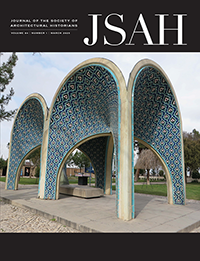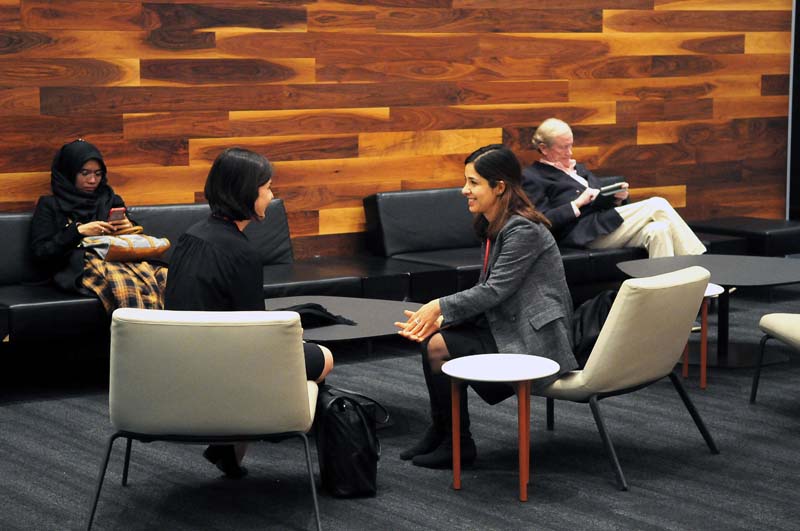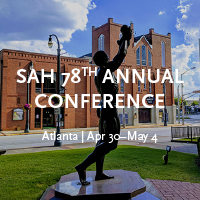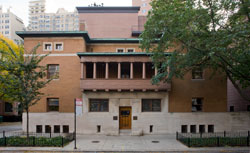-
Membership
Membership
Anyone with an interest in the history of the built environment is welcome to join the Society of Architectural Historians -
Conferences
Conferences
SAH Annual International Conferences bring members together for scholarly exchange and networking -
Publications
Publications
Through print and digital publications, SAH documents the history of the built environment and disseminates scholarshipLatest Issue:

-
Programs
Programs
SAH promotes meaningful engagement with the history of the built environment through its programsMember Programs
-
Jobs & Opportunities
Jobs & Opportunities
SAH provides resources, fellowships, and grants to help further your career and professional life -
Support
Support
We invite you to support the educational mission of SAH by making a gift, becoming a member, or volunteering -
About
About
SAH promotes the study, interpretation, and conservation of the built environment worldwide for the benefit of all
Membership grants you access to exclusive resources and programs and provides support for new research and programs. Compare benefits across all our membership levels and choose the membership level that works for you.
Every Member Receives
- A yearlong subscription to the Journal of the Society of Architectural Historians (JSAH). Choose from digital access only or a combined print and digital subscription.
- On-demand access to the complete JSAH Archive (1941–present)
- Member rates for registration to SAH’s Annual International Conference
- AIA CES credits earned through conferences and study tours
- Eligibility to apply for SAH grants and fellowships
- Access to members-only lectures, virtual meetups, and more
- Connection to peers through 12 topic-focused SAH Affiliate Groups
- Access to more than 200,000 images of the built environment through the SAHARA database
- Access to SAH Commons online scholarly network
- Discount of 50% on JSTOR access with JPASS
- Eligibility to serve on the SAH Board or committees
- Subscription to the SAH Newsletter and Opportunities Weekly Roundup
Membership Levels
SAH Member
Our most popular membership tier offers optimized pricing to help everyone participate affordably in our community. Emerging scholars can apply for a one-year membership grant that helps bridge the gap between the Society's subsidized student memberships and full-cost SAH memberships.
| Rate | Description | Price: Digital | Price: Digital + Print |
| Individual | 12-month benefits for one person | $163 | $173 |
| Joint | 12-month benefits for two people (domestic partners). Each person receives a unique member ID and their own login to the member portal. | $233 | $243 |
| Retired/Emeritus | Discounted individual membership for former professionals on a fixed income | $98 | $108 |
| Reduced | Discounted individual membership for people working independently or at an institution without full-time employment. This includes adjunct and contingent faculty unemployed workers. | $98 | $108 |
| Student | Discounted individual membership for students currently enrolled in an undergraduate or graduate program in architectural history or related disciplines. | $60 | $70 |
| Professional Associate | Discounted individual memberships for groups of professionals working in the same museum, office, or firm. Ideal for architects, research or preservation groups, museum staff, and public design education. | $179 for first member + $103 for each additional member at the same institution | |
Upper-Level Member
Show your support for SAH’s mission by including a tax-deductible donation along with your Individual or Joint print + digital membership. Upper-level members receive all the benefits of a regular membership plus:
- Discount on registration for SAH Annual Conference, rates given below.
- Acknowledgement in four quarterly issues of JSAH, the annual report, and quarterly donor reports
- Membership to Frank Lloyd Wright National Reciprocal Sites Program, with which our headquarters, the Charnley-Persky House is affiliated.
- Early registration access for SAH Study and Excursion tours
| Tier | Donation | Price with Individual Membership | Price with Joint Membership | Discount on Annual Conference Registration |
| Cornerstone | $150 | $323 | $393 | 5% |
| Pillar | $350 | $523 | $593 | 7% |
| Keystone | $500 | $673 | $743 | 8% |
Life and Benefactor Member
Show your long-term commitment to SAH by becoming a Life member. Life members’ dues provide unrestricted funds to support the Society’s mission and continued opportunities for all members. Lock in your price and enjoy the most comprehensive suite of member benefits without the need to renew each year.
Life members receive these additional benefits:
- Acknowledgement in JSAH, annual report, and quarterly donor reports
- Membership to Frank Lloyd Wright National Reciprocal Sites Program, with which our headquarters, the Charnley-Persky House is affiliated.
- Early registration access for SAH Study and Excursion tours
- Specialty membership card
- Free tour of SAH's historic headquarters at the Charnley-Persky House in Chicago, IL
- One complimentary walking tour during SAH Annual Conference, reserved in advance, on a space-available basis.
- Free copy of an SAH Buildings of the United States book of your choice
Current Life Members can enhance their commitment to SAH by becoming a Benefactor through a $5,000 tax-deductible donation.
| Tier | Price | Donation Total |
| Life | $5,000 (one payment or four annual payments of $1,250) | None * |
| Benefactor | $10,000 | $5,000 |
* Life memberships are amortized over a period of 20 years and pay for annual benefits. There is no tax-deductible portion associated with Life membership.
President's Circle
SAH is immensely grateful to the many Life and Benefactor Members who continue to support the Society financially year after year. President’s Circle status recognizes the ongoing commitment these members show.
President’s Circle status is an annual distinction given to all Life and Benefactor members who make gifts to the Society of Architectural Historians totaling $1,000 or more during a given 12-month period. The status is applied to a donor as soon as they have achieved $1,000 in gifts within a single calendar year. The status is valid for 12 months from that date, and the date shall serve as an anniversary by which to renew their President's Circle status with one or more gifts totaling $1,000.
President's Circle members receive special benefits as thanks for their support:
- 10% discount on member-rate conference registration
- Recognition from the podium at SAH Celebrates annual gala
Limited-Access Affiliate
Affiliate membership permits an individual to participate in the activities of one or more SAH Affiliate Groups and the SAH Commons online scholarly network, without access to any other SAH benefits such as JSAH or discounted registration for conferences. Price is $25 per year.
Institutional Subscription
Institutional membership provides a subscription to JSAH and/or JSAH Online for communities of readers at public and academic libraries, museums, schools of architecture, architectural history departments, and other large institutions. Institutional subscribers receive the SAH Newsletter, qualify for discounted Career Center job ads, and member-rate registration for two library staff attending the SAH Annual International Conference.
The University of California Press handles institutional subscriptions on SAH's behalf. Visit the UC Press website to join or renew your Institutional subscription.
| Subscription Type | Price per Year | Additional Benefits |
|---|---|---|
| Digital Only | $693 | |
| Print + Digital - Domestic | $781 | |
| Print + Digital - International | $807 | |
| Sustaining | $881 |
|
Affiliate Groups
SAH Affiliate Groups are comprised of SAH members who share a common, narrowly defined interest, scholarly or otherwise. Participation in Affiliate Group activities is a benefit of SAH membership.
SAH Chapters
SAH has chapters located across the United States. Chapters are independently run organizations that are affiliated with SAH. SAH members can join chapters in their region.
Member Stories
Member Stories: Maria Elisa Navarro Morales
Jun 26, 2023
by
SAH News
 Maria Elisa Navarro Morales is an architect and architectural historian. She lives in Dublin and has been a member of SAH since 2012.
Maria Elisa Navarro Morales is an architect and architectural historian. She lives in Dublin and has been a member of SAH since 2012.
Can you tell us about your career path?
My career developed slowly. I studied architecture at the Universidad de Los Andes in Colombia, a program I joined at a very young age and, as many others, I saw in architecture a good compromise between my love for math and my interest in art history. I was lucky to have studied at Los Andes in the late ‘90s in a program envisioned by a young director, Dr. Fabio Restrepo, who saw the importance of balancing design studio with the humanities and technology. This helped me appreciate aspects of the discipline beyond design, something that ultimately impacted my career. I graduated from a five-year professional program in 1999. After, I worked for a couple of years in offices in Bogota, but as most of the people of my generation, I ended up leaving a war-stricken Colombia in 2001. I think back at those years and realize how difficult it was to find your feet after leaving your country unwillingly, something many young people are faced with today. In 2005 while living in the US, I decided to apply to the MArch program in History and Theory at McGill University. I was familiar with the program since in 1998 I went to Montreal as an exchange student and took Prof. Alberto Pérez-Gómez's course, Architectural Intentions. When I arrived at the History and Theory program at McGill, I felt I had found my way and I decided to apply to the PhD program, a possibility I never considered as a young Colombian architect. I completed a PhD on the architectural theory of Juan Caramuel de Lobkowitz in 2013 under Prof. Pérez-Gómez´s supervision. While at McGill I had the opportunity to teach as a summer replacement in the School of Architecture at Dalhousie University in Halifax, Canada, in 2010. The following year I moved to Halifax to work as assistant professor at Dalhousie. At the end of 2013, the possibility to move back to Colombia appeared and in January 2014 I moved back to Colombia to work at the School of Architecture at Universidad de Los Andes. After spending five years in Colombia it became clear that the opportunities for doing research and get the experience and exposure I sought are still very limited in Colombia, so I moved to Dublin in 2019, where I work as an assistant professor at Trinity College Dublin.
What projects are you currently working on?
My main project right now is a monograph on the architectural theory of Caramuel de Lobkowitz. This is a project that has developed over the last 10 years, first with my doctoral research where I read very carefully Caramuel´s treatise “Archtectura Civil Recta y Obliqua” and wrote a critical edition. More recently while doing archival work I discovered the unpublished fourth volume of “Architectura Civil” at the archives in Vigevano, which demonstrates that Caramuel’s treatise was published incomplete and makes necessary a revision of our interpretation of the treatise to date. In my book, I show how Caramuel used architecture to investigate political, philosophical, historical, theological, and astronomical questions. Through an in-depth study of Caramuel´s treatise, including the unpublished fourth volume, my book explores how early modern architecture was a tool and method for knowing the world.
In addition to the manuscript, I am also preparing a transcription of the found manuscript, which I intend to publish in a digital edition.
Do you have a particular memory of when you first became aware of the significance of architecture or when you knew you wanted to study it?
One experience that marked me was working as a young architect in Bogotá at the end of the nineties. At the time the mayors of the city, Antanas Mockus and Enrique Peñaloza, developed a policy to improve the living conditions of the city, and the office of urban planing developed many projects including the construction of sidewalks along some of the main commercial streets. Before this project, sidewalks in Bogota were considered private parking spaces for the shops facing it. They were developed in a patchwork manner without any consideration for continuity or accessibility. The project was designed at the central planning office and developed by individual architects’ firms, including the one I was working for at the time. There was a lot of resistance to the project at the time, especially shop owners who were concerned that removing the parking was going to affect their sales. When the project was finished, the city had many kilometers of public space, and the city was transformed. The sidewalks were real public space where people meet, walk, and go shopping and where everyone has the same rights to it. I think this project is one of the first that showed me the importance of architecture and how the build environment can completely transform the lives of people with simple interventions.
What is your biggest professional challenge?
I think one challenge historians of any sort face today is how to negotiate a work that takes a very long time to produce with the immediacy that characterizes our society. I feel there is a lot of pressure to respond to current questions with our research and these questions change very quickly without us having time to think and respond to them. I think the challenge then is to remain focused and trust the importance of the research we do outside from current trends and be able to communicate this importance and timelessness.
When and how did you become involved with SAH?
I became part of SAH when I was doing my PhD and I presented a paper at the annual conference in 2013 in Buffalo, NY. I have been a member since then and presented papers in some of the annual meetings including Pasadena 2016 and the online conference in 2020. At this conference I met Prof. Jesus Escobar, whom I consider a mentor. Through SAH and the opportunities it advertises, I learned about the research project “Spanish Italy and the Iberian Americas,” which I joined from 2016 until 2023. Being a member of SAH has helped me build a network of scholars working that has significantly impacted my work.
Do you have a vision for how SAH should evolve in the future?
I think SAH is an impressive organization that supports architectural historians in many ways. I think the current initiatives of SAH IDEAS on inclusion, diversity, equity, accountability, and sustainability are commendable, and I hope to see them continue in the future. I have seen more and more the diversity of themes and geographies included in the conferences and in the journal. The Society supports students and academics in early stages and is active in supporting those with precarious or contingent positions. Personally, I find it reassuring to have an institution like SAH lobbying for us on these matters in the U.S.
I think as a leader in the Americas SAH should find partners that will allow it to extend that support to Latin America. While other associations in the UK and Europe exist, scholars from Central and South America are less fortunate. I would love to see a Latin American chapter for SAH.
What advice would you give to someone who wants to enter your field?
This is a difficult question. The first thing I would say is that they are entering a fascinating and exciting field and that I hope they enjoy it as much as I do. I think it is important to be passionate about the topic one studies as it takes most of our time and lives. You have to be in love with what you study to stay interested and endure the hardships of academic life.
My advice to people entering architectural history is to take time making decisions and informing themselves on the opportunities available to them. Architectural history is a rich field and I think it is important to take time deciding things like where and with whom to do a PhD as well as understanding what are the professional opportunities available. Academia is very competitive and with schools of architecture reducing their offerings on architectural history more and more, the jobs are few and competition very high.
I think the future of architectural history is in the hands of those entering in the field, and they have a difficult challenge in making changes that are necessary. We need to strive for more jobs with more stability and we have a long way to go to achieve equity and diversity. But I believe if newcomers are aware of the challenges and the value of their work, architectural history will be in good hands.
SAH members engage with the history of the built environment through a broad array of specializations, professional fields, and areas of interest. Member Stories is a regular feature that recognizes the expertise and unique experiences of our members.

Membership Grants
Emerging scholars can apply for a one-year membership grant that helps bridge the gap between the Society's subsidized student memberships and full-cost SAH memberships.

